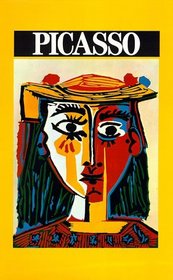Search -
Picasso (Great Modern Masters)
Picasso - Great Modern Masters
Author:
One hundred and twenty prints by Picasso from the collection of the Simon Norton Museum are presented in this highly readable, fully illustrated, and scholarly catalogue which accompanies the exhibition at the Iris & B. Gerald Cantor Center for Visual Arts at Stanford University, at the Toledo Museum of Art, and at the Simon Norton Museum.After ... more »
Author:
One hundred and twenty prints by Picasso from the collection of the Simon Norton Museum are presented in this highly readable, fully illustrated, and scholarly catalogue which accompanies the exhibition at the Iris & B. Gerald Cantor Center for Visual Arts at Stanford University, at the Toledo Museum of Art, and at the Simon Norton Museum.After ... more »
ISBN-13: 9780810946903
ISBN-10: 0810946904
Publication Date: 6/1995
Pages: 64
Rating: ?
ISBN-10: 0810946904
Publication Date: 6/1995
Pages: 64
Rating: ?
0 stars, based on 0 rating
Genres:
- Arts & Photography >> Individual Artists >> ( P-R ) >> Picasso, Pablo
- Arts & Photography >> Individual Artists >> General
- Arts & Photography >> History & Criticism >> Schools, Periods & Styles >> Cubism
- Arts & Photography >> Art >> Painting >> General
- Arts & Photography >> Art >> General
- Children's Books >> Arts, Music & Photography >> Art >> General




